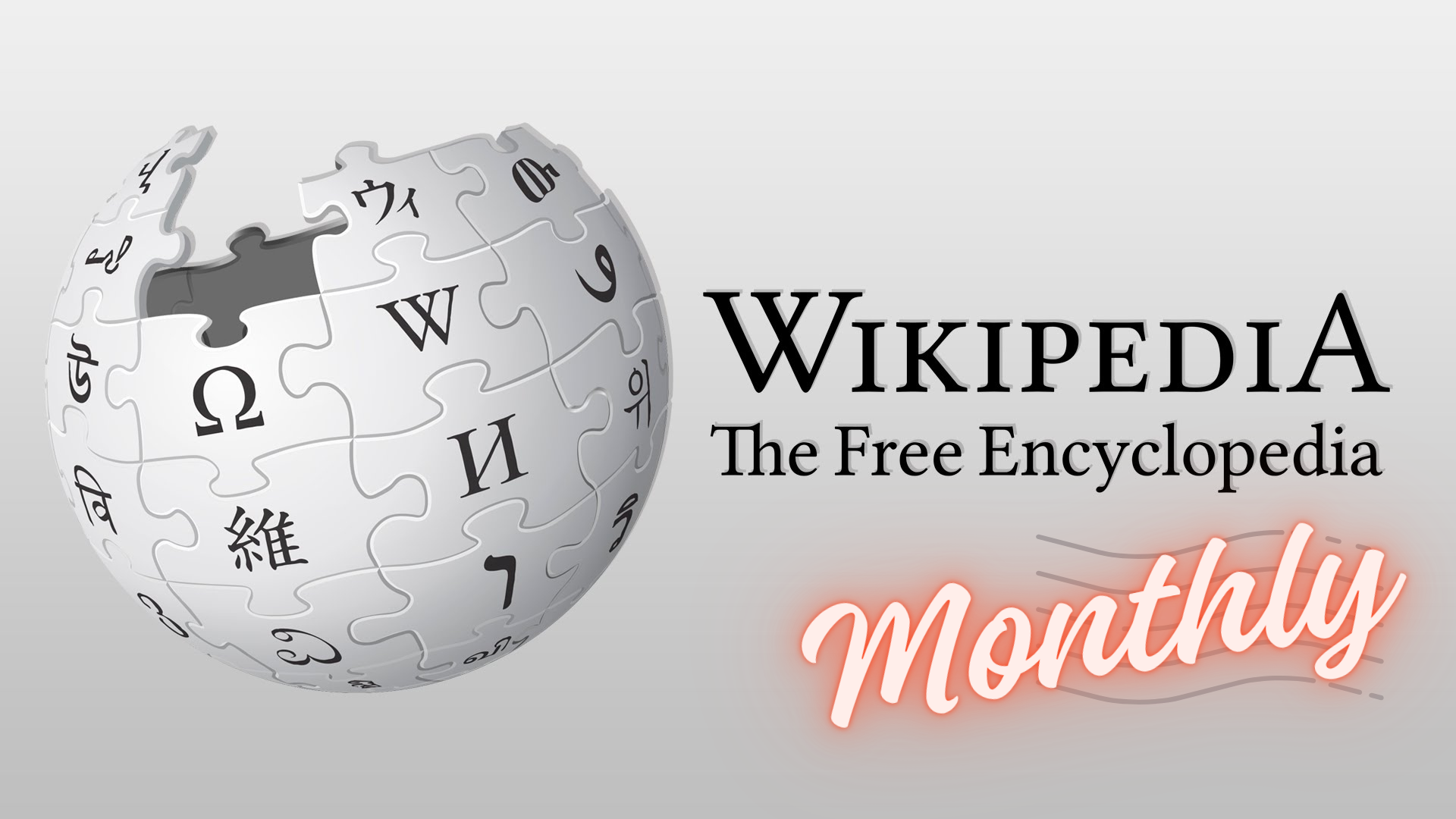
What is Data: A Brief Guide
This article is the first in my Data series. This one is an introduction to ease you into this world, while the next articles will be more hands-on and focused on practical uses, opportunities and challenges relating to data.
⸺
The word 'data' may seem technical and complex to the uninitiated, often relegated to the realm of professionals and computer whizzes. Yet, in its essence, data is just recorded information. It can be a timeline of past events, a continuous update of facts or a compilation of loose, unstructured information.
In essence, data is the backbone of our digital lives and an influencer in our physical world. It informs decisions, powers technologies, and shapes experiences in ways we might not even perceive, making it an integral part of our everyday lives. Understanding the influence of data isn't just about acknowledging its presence, but about realizing its potential to enhance, transform, and optimize various aspects of our lives, as well as its implications on privacy.
What Is Data Useful For?
Businesses use data to understand their customers better, improve their products or services, and make strategic decisions. In healthcare, data is used to track diseases, develop new treatments and improve patient care. In education, it is used to understand learning patterns and improve teaching methods. Academics and researchers use data to compare theory and facts, discover new insights and drive innovation.
Let's explore some of the ways data permeates our everyday lives.
Shopping and Entertainment
Data has revolutionized the way we shop and consume entertainment. Online shopping platforms use data about our browsing and purchasing habits to recommend products we might like. Movie and music streaming services use similar techniques, suggesting new shows, films, and songs based on our past preferences. They can predict trends and create content that their audience is likely to enjoy, all thanks to data. Some recommendation systems have better results than others, depending on the industry.
Diving deeper
How Netflix predicts which movie you want to watch next
Recommendation systems in E-Commerce
Health and Fitness
From wearable devices tracking our steps and heart rate to apps monitoring our sleep patterns or diet, data has become a key player in personal health and fitness. This data helps us understand our health better, set fitness goals, and track our progress. In medical settings, patient data is used for diagnosis, treatment plans, and predicting health risks, playing a critical role in healthcare outcomes.
Right from the beginning of the COVID-19 pandemic, data played a critical role and contamination related dashboards got significantly popular.
Diving deeper
Risks and Opportunities of Data in Healthcare and Fitness
Tracking the economic impact of COVID through various indicators
Social Connectivity
In the realm of social media, data shapes our online interactions and experiences. Algorithms use our behavior data (likes, shares, comments) to curate our newsfeed, showing us more of what we engage with and less of what we don't. This personalization, powered by data, influences our digital social interactions and the content we consume.
It is not all sunshine and roses, as algorithmic feeds increase the effect of echo chamber, which in turn result in more intense polarization of society on contentious topics.
Diving deeper
How Do Social Media Feed Algorithms Work?
Echo Chambers, Rabbit holes and ideological bias: How Youtube recommends content
Navigating the World
Every time we use a navigation app to find the quickest route home or to discover a new restaurant, we're relying on data. These apps use real-time traffic data to calculate the fastest routes, location data to pinpoint businesses, and review data to recommend places. Data helps us navigate through our cities, our neighborhoods, and even unfamiliar places with ease.
Diving deeper
How Google Maps uses data to show you realtime traffic information
OpenStreetMap, a collaborative effort to collect and build a map of the world
Education and Learning
Data is also transforming education, from primary schools to universities to online learning platforms. Educators use data to understand learning patterns, identify areas of difficulty, and tailor instruction for individual needs, giving rise to personalized learning curricula, a long sought after holy grail of education, helping to counter the challenge of understaffing in educational institutions around the world, as well as adapting faster to the continuously changing knowledge landscape and skills that are in professional demand.
Diving deeper
Using data to improve the quality of education - UNESCO
Making Data Work for Personalized Learning: Lessons Learned
Public Services and Policy Making
Even in the public sphere, data guides decisions and policies. Government bodies use data to monitor economic trends, plan public services, and make policy decisions. Urban planners use data to design cities and public spaces. Environmental scientists use data to track climate change and suggest sustainable practices. The rising trends around smart cities and digital twins is a concrete embodiment for a data-driven approach to shape the urban landscape.
Diving deeper
Smart City Data Governance: Challenges and the Way Forward
Urban digital twin applications as a virtual platform of smart city
What about privacy?
While not all data is about individuals, consumption habits can be particularly lucrative to many industries, especially for advertising. This makes data collection in consumer platforms very pervasive and ubiquitous, on one hand, enhancing our experiences, personalizing our interactions, and offering tailored services. On the other hand, it raises questions about who has access to our information, how it's used, and how it's protected. That's when the supposed enhancement is not actually a downgrade of the baseline experience.
In addition to Personal Identifiable Information (PII), which can be used to trace back your activity back to your identity, other records such as browsing habits to personal preferences, sometimes collected without explicit consent, can be used to build intricate profiles of individuals, leading to concerns about surveillance and a loss of privacy. Other threats, data breaches and unauthorized access, can result in sensitive information falling into the wrong hands, risking identity theft and other forms of cybercrime.
Regulations like the General Data Protection Regulation (GDPR) in Europe, or CCPA in the state of California, aim to give individuals control over their data. However, striking a balance between the benefits and revenue potential of data and protecting individual privacy remains a complex challenge.
Being aware of these issues is the first step towards smarter, safer interactions in our data-driven world. Awareness and better data-hygiene starts at the individual - you! - and is the first step towards a privacy-respecting economy, since several actors in this space are leveraging the lack of consumer awareness to adopt abusive collection practices.
Diving deeper
Comparing Privacy Laws: GDPR vs CCPA
Steps To Protect Your Privacy Online
Unveiling the Types of Data
Diving deeper into the realm of data, we find that it's not a monolith but a spectrum of varied types. Broadly speaking, data can be classified into several categories based on its nature and structure, each having a different range of applications and industries where it is useful.
Time Series Data

Picture this: a line graph charting the rise and fall of temperatures over a year. Each point on the graph represents a daily temperature reading, with the continuous line joining these readings together creating a visual narrative of weather patterns.
Similarly, imagine a graph illustrating a company's stock prices over the past decade. Each point signifies the closing price of the stock for a particular day, and the line connecting these points provides a chronological overview of the company's financial performance.
In both cases, what you are seeing are examples of time series data, which is a set of data points collected or recorded in sequence over time. This kind of data is akin to a movie reel, capturing the ebb and flow of information over a specified period, and allowing us to observe and analyze patterns and trends that emerge over time.
Cross-sectional Data

If time series data can be likened to a movie, capturing the dynamic changes over a period of time, then cross-sectional data is akin to a snapshot. It provides a static picture of various aspects at a single moment in time, without the dimension of past or future.
For instance, consider a survey of people's eating habits conducted in a particular month. This survey would provide an array of information about diverse eating habits, dietary preferences, and food consumption patterns within that specific month. It doesn't track the progression or evolution of these habits over time.
Similarly, a company's financial report for a specific quarter provides a cross-sectional view of that organization. It presents a comprehensive picture of the company's financial health, resource allocation, revenue generation, and expenses during that quarter. While these reports do not depict the temporal progression of the company's finances, they offer an in-depth understanding of its financial status at a particular point in time. This snapshot approach allows for easy comparison and evaluation of different entities or situations at a single point in time.
Transactional Data

Transactional data is akin to a ledger tracking the individual transactions or actions in a system. This kind of data is abundant in almost all sectors where transactions occur and are recorded. It paints a clear picture of actions taken within the system, providing valuable insights into user behavior and system performance.
Take, for example, your online shopping habits. Every time you make a purchase online, your transaction, including the item bought, the price, the time, and other intricate details, becomes a part of the transactional data for that online platform. This kind of data is like a detailed digital diary, diligently logging the who, what, when, and where of every action.
Similarly, banks and financial institutions amass a staggering amount of transactional data daily. Each withdrawal, deposit, or transfer becomes a record in their vast reservoir of transactional data. This data helps banks detect fraudulent activities, track customer spending habits, optimize their services, and make informed decisions. Thus, transactional data, like a diligent bookkeeper, serves as the backbone of many industries, driving operational efficiency and strategic decision-making.
Graph-based Data

In our interconnected world, relationships matter. The fabric of our social and digital existence is intertwined, built upon numerous interactions and connections. This complex, interconnected reality is best represented through graph-based data, which captures these relationships with precision and clarity.
Take for instance, a map of all the connections on a social media platform. In this rich network, each user, whether an individual or a business, is represented as a node. Each interaction, be it a message, comment, or a shared post, forms a connection or an edge in this vast social graph.
Another classic example is the web of links between different websites on the Internet, often referred to as the World Wide Web. Every website serves as a node, and every hyperlink to another site forms an edge. This wide-ranging, intricate web of connections forms the backbone of our digital landscape. Each node, or point in the graph, represents an entity, be it a personal blog or a multinational corporation's homepage, and each connection or edge signifies a relationship, a pathway for information to travel and proliferate.
Collections of Records

Record collections are simply set of records or entries, each representing an individual unit of information. This concept of record keeping has been integral in various sectors, facilitating the organization and easy retrieval of data.
For instance, consider a database of a library's book collection. Here, each record corresponds to a single book, capturing crucial details like its title, author, publication year, and more. Such a collection turns a vast array of books into a structured, comprehensible system, thus making information from any book easier to find than ever before.
Another prime example of a record collection comes from governmental census data. Governments worldwide conduct comprehensive population censuses at regular intervals. Each record in this grand database represents an individual or a household, providing critical data such as age, occupation, educational level, and marital status among others. Just like the library's book collection, a census turns a massive population into a structured and easily accessible data set. This information enables governments to make informed decisions regarding resource allocation, policy-making, and urban planning, demonstrating the power of record collections in driving societal development.
AI Training Datasets

Finally, we have training datasets, which predominantly hold a central role in the realm of artificial intelligence. These specialized collections serve a unique purpose, distinct from traditional record collections. They provide the bedrock upon which machine learning models learn, adapt, and predict.
In more detail, an AI training dataset is a collection of examples used to train a machine learning model. Each entry in this dataset takes an input, which could be an image, text, or any other form of data, and an expected output, which could also take any arbitrary format. Essentially, these input-output pairs form the basis of the learning process for AI models. In practice, the training dataset can contain rows that range from as few as tens to as many as billions, each representing a piece of information that informs the AI model and trains it on the problem we want it to solve. We'll delve deeper into the intricacies of training datasets in a future article, shedding light on their structure, use-cases, and immense importance in the burgeoning field of artificial intelligence.
Storing, Organizing and Accessing Data
Now that we have an understanding of what data is and its various types, let's see how data is used, shedding light into storage, organization, as well as how to surface insights from mere record entries.
Safekeeping: Data Storage
Think of data storage as a filing cabinet, a place where the data is kept for safekeeping. In the digital world, this filing cabinet takes the form of databases. These databases are not too different from your music or photo libraries, with the key difference being the type and amount of data they hold. They can store vast amounts of diverse data, from text and numbers to images and multimedia.
Diving deeper
Security and Privacy Considerations for Data Storage Systems
Making Sense: Data Organization
Storing data, however, is just the first step. Imagine trying to find a single document in a cabinet full of unsorted papers. It would be like finding a needle in a haystack. Similarly, data needs to be organized in a logical, structured way to make it usable. The organization of data involves categorizing and arranging it based on different attributes, such as type, date, relevance, and so on. This process transforms a massive pile of data into a well-organized library, where each piece of information is easy to locate and retrieve.
Diving deeper
Key Benefits to Metadata Management
Storage and Indexing Methods for Data Organization
Asking Questions: Data Querying
Once data is stored and organized, we need a way to interact with it, to ask questions and get answers. This is where querying comes in. Querying is like having a conversation with your data. You ask a question, or query, and the database provides an answer. For instance, "How many books in the library are by a particular author?" or "What was the highest selling product last month?" The power of querying lies in its ability to extract precise information from massive datasets swiftly and efficiently.
Diving deeper
Real World Applications of Data Querying
Visualizing Insights: Analytics and Dashboards
Finally, we arrive at analytics and dashboards. These are the tools that take the raw data, analyze it, and present it in a visual and understandable manner. They transform the dry numbers and text into colorful graphs, charts, and tables, bringing the data to life. Dashboards are like the cockpit of a plane, providing all the critical data at a glance, and allowing you to navigate through the world of information effectively.
Remember, the goal of storing, organizing, and accessing data is to extract value from it, to transform raw data into meaningful insights. By understanding the basics of this process, we move one step closer to harnessing the power of data in our daily lives.
Diving deeper
Introduction to Data Visualization
Considerations and Best Practices in Dashboard Design
Looking Forward: Making Data Work for You
Now that we understand the omnipresence and importance of data, the question arises — how can we use it to our advantage?
Data can be a powerful ally in automating tedious tasks. For example, by gathering data from the web, we can create lists, compare prices, or monitor changes on a website. We can use data to inform our decisions, big or small. Whether it’s deciding what brand of toothpaste to buy based on customer reviews, or a company investing millions based on market trends, data-driven decisions can be more reliable and effective.
In the following articles from the Data series, we'll delve deeper. We'll explore how to actually obtain, then effectively use, store, and analyze data to gain insights and make informed decisions. We'll demystify the technical jargon and provide practical advice and tools that you can use, regardless of your technical prowess.
Understanding data is not just for the tech-savvy or the professionals. It is a skill for everyone navigating the digital world. After all, in this age of information, data literacy isn't just about possession—it's about comprehension. It's not merely having access to a sea of data, but understanding how to navigate it, interpret it, and convert it into meaningful insights.
⸺
Navigating data-related hurdles or keen on exploiting untapped data opportunities? With my extensive expertise in data scraping, storage, and processing, I am well-equipped to guide you towards your business objectives.


Omar Kamali
Tech Founder & AI Strategist
Building products at the intersection of AI scale and human finesse, making complex technology accessible to everyone.
More about me


